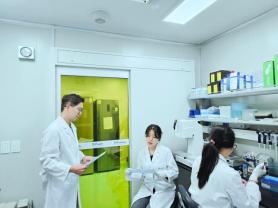
SEOUL, November 17 (AJP) - KAIST said on November 17 that its researchers have developed a way to look inside a light-based quantum computer almost like taking a CT scan. The idea is to make the machine’s hidden operations visible so researchers can understand how the device actually works.
Light-based quantum computers use many small light signals that interact and become tangled with one another. This tangling makes the machines powerful, but it also makes them very hard to examine or verify. Until now, scientists struggled to analyze even around five of these signals at once.
The KAIST team, led by physics professor Ra Young-sik, created a method that can examine up to sixteen light signals working together. According to the school, this is the first time such a large number has been analyzed experimentally.
The basic idea is simple: send different kinds of light into the machine, see how they change on the way out, and then use math to recreate what happened inside. It works much like a medical CT scan, where images are rebuilt from many pieces of data.
To make this easier to understand, the researchers separated the changes into two parts. One part shows how the light itself was strengthened or altered. The other part shows how much noise or unwanted disturbance came in from the environment. By splitting these two effects, the method gives a clearer view of both the ideal operation and the real-world imperfections.
The new approach also cuts down the amount of data needed to run this kind of analysis. That makes it possible to study much larger quantum operations without overwhelming the system.
The research team includes Gwak Geunhee as first author, along with Roh Chan, Yoon Young-do, and Imperial College London professor Kim Myung-sik. The findings were published online on November 11 in Nature Photonics. (Source: KAIST press release)
The work was supported by the National Research Foundation of Korea, the Institute of Information and Communications Technology Planning and Evaluation, and the U.S. Air Force Office of Scientific Research.
Copyright ⓒ Aju Press All rights reserved.




